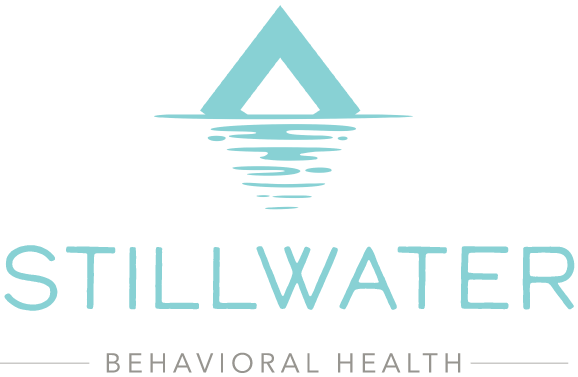Meth Detox Center In Southern California
Meth is a powerfully addictive drug that can have many negative side effects. Learn here about how to recover from meth addiction.
Table of contents
What is Methamphetamine?
Methamphetamine is a highly addictive stimulant that impacts an individual’s central nervous system. It is derived from amphetamine but generally has negative impacts that last longer and are more harmful to the body. Because of its addictive characteristics, this drug has a high potential for substance addiction. However, meth addiction treatment can help someone get back to a healthy lifestyle.
A study from the National Survey on heroin Drug Use and Health found that nearly 1.6 million people within the United States reported substance addiction to methamphetamine within the last year.1
Questions about addiction?
Call Us Now: 1-866-232-9103
Your call is confidential with no obligation required to speak with us.
What Does Meth Look Like?
Depending on how the substance is used, methamphetamine may have a slightly different appearance. Characterized by its white, odorless, and bitter powder, meth can also appear crystal-likae in structure and resemble tiny fragments of glass or shiny bluish-white rocks.2
Street Names
- Batu
- Bikers coffee
- Black beauties
- Chalk
- Chickenfeed
- Crank
- Crystal
- Glass
- Ice
- Poor man’s cocaine
- Speed
- Trash
- Tweak
- Uppers
- Yaba
- Yellow Barn
Meth vs. Crystal Meth
Meth and crystal meth are the same substance. Crystal meth generally describes the drug in its most potent form. Crystal meth may be able to remain in the body for up twenty-four hours because of the drug’s half-life of being between six and fifteen hours. In some instances, the meth half-life indicates that the drug may be able to stay in the body for even up to thirty hours.
Crystal meth is a form of meth that simply looks like crystals or rocks. In addition, crystal meth, also known as “ice,” may have a stronger impact on the body. Because crystal meth is the purest form of the drug, it does have the most potent effects.3
Drug Schedule
Drug schedule refers to how the Drug Enforcement Administration (DEA) classifies certain substances. Schedule II drugs are substances that have a high potential for substance abuse and may lead to psychological dependency and substance addiction. Because of its highly addictive potential, methamphetamine is a Schedule II drug.4
Signs and Symptoms of Meth Addiction
As a stimulant, the physical symptoms of methamphetamine often include dilated pupils, rapid heartbeat, hyperactivity, twitching, loss of appetite, insomnia, dry mouth, weight loss, and raised body temperature.
Meth addiction is also associated with many adverse behaviors—including mood swings (especially those involving irritability and aggression), paranoia, poor hygiene, memory loss, hallucinations, delusions, and heightened impulsivity. Over time, substance abuse may cause a person to engage in secretive behavior to cover up the addiction, withdraw from others, and experience financial instability.
If you or someone you love is exhibiting any of these warning signs, consider turning to a meth addiction treatment center in Southern California for comprehensive support.
Effects of Meth Addiction

Meth has several negative impacts on the body. Because the substance provides a high risk for drug abuse, it is important to get treatment as soon as possible. Even so, the side effects of meth can be found in the sections below.
Short-Term Side Effects
Because methamphetamine is a powerful stimulant, small doses can make an individual feel more awake, more physically active, and even have a decreased appetite. Some of the other short-term meth side effects include:
- Increased attention
- Decreased fatigue
- Increased activity, feeling more awake, decreased appetite
- Euphoria
- Rapid or irregular heartbeat
- Increased blood pressure
- Hyperthermia
- Increased respiration
Long-Term Meth Side Effects
Long-term use of methamphetamine has several negative impacts on the body. Moreover, crystal meth addiction is chronic and may even make changes to the brain.
Research on primate brains has found that those who use methamphetamine can experience structural and functional changes in the areas of the brain implicated in emotion and memory. Additionally, research has shown in primates that methamphetamine may contribute to a decline in mental flexibility, which may also contribute to why relapse is so likely to occur.5
Over time, individuals who have a crystal meth addiction may experience the following issues:
- Psychosis
- Changes in brain structure and function
- Deficits in thinking skills
- Deficits in motor skills
- Memory loss
- Aggressive or violent behavior
- Disturbances of mood
- Dental problems
- Weight loss
- Distractibility
Meth Tolerance
Methamphetamine tolerance refers to the process in which a substance’s effects decrease over time. It typically occurs when an individual misuses a drug and needs to take more to achieve similar highs as when they first took it. Tolerance may influence someone to take more of the substance and may lead to an overdose.
Meth Dependence
When an individual develops a tolerance for meth, they become dependent on it. Someone can tell when they are dependent on a drug because they will feel the effects of withdrawal and may need to take more of that substance to experience the same effects.
Meth Withdrawal
Meth withdrawal is characterized by depression, anxiety, fatigue, and an increase in cravings for methamphetamine. Drug withdrawal symptoms can be unpleasant and should be addressed when an individual receives meth addiction treatment.
Meth Overdose
Methamphetamine is one of the leading causes of all drug doses. In fact, meth overdose claimed the lives of over 67,000 people within the United States in 2018. Meth overdose is treatable if performed quickly. If you notice the signs of meth overdose, call 911 immediately. Some of these symptoms to watch for meth overdose include:7
- Difficulty breathing
- Chest pain or confusion, like the signs of a heart attack or stroke
- Seizures
- High or low blood pressure
- High body temperatures, also known as hyperthermia
- Kidney failure
- Stomach pain
- Changes in personality or alertness
- Lost consciousness
- Aggressive behavior
- Paranoia
Meth Addiction Treatment
Luckily, there are many options for meth addiction treatment. While behavioral meth addiction treatment options are the most effective, other types of therapies such as the Matrix Model can help. Incentive-based programs also may be viable treatment options. For individuals who suffer from substance addiction, attending treatment can assist in meth addiction recovery.
Some of the more common meth addiction treatment options include:
- Cognitive-behavioral therapy (CBT)
- Medication-assisted treatment (MAT)
- Interventions
- Therapies
- Inpatient rehab
- Outpatient rehab
How Meth Addiction Treatment at StillWater Works
As a leading meth addiction treatment center in Southern California, Stillwater starts all new clients through their detox process for drugs. Detoxification for meth—the process in which the body is rid of the substance—can take up to two weeks, depending on the intensity of the addiction. During this step, Stillwater provides 24-hour medical supervision and support to safely minimize withdrawal symptoms.
Once detox is complete, our team of addiction specialists works with each client to pinpoint the specific characteristics of their addiction and identify the steps to best build a lasting recovery.
Treatment is individualized to optimize results and typically involves one or more forms of therapy, physical wellness, nutrition care, and group counseling. Stillwater also specializes in dual diagnosis care, which allows clients to treat mental health issues that occur alongside addiction—such as depression, bipolar disorder, and PTSD.
Throughout treatment, clients live within peaceful residences in beautiful Southern California. Top-tier amenities—such as private rooms, chef-prepared meals, in-ground pools, flat-screen TVs, and fitness resources—are provided to ensure each individual can focus on their recovery without worrying about daily comforts.
While the length of stay can depend on the individual’s needs and preferences, those who complete treatment will leave with knowledge of how to continue work on recovery and how to safely manage relapse risks.
Meth Relapse Prevention at StillWater

Relapse is a common part of any meth addiction treatment, and many people may go through relapse as part of the healing process. However, there are several management techniques to help someone avoid relapse during treatment.
Causes of Meth Relapse
Those who struggle with addiction and substance abuse may experience relapse. While the reason why someone relapses will depend on many factors, it’s important to understand that meth addiction treatment is not easy. When someone leaves a treatment center and goes out into the world, they find themselves encountering stressors and a variety of potential problems.
Without a proper support system, it can be difficult to adjust to life on their own. Additionally, individuals may find themselves without their core group of friends and may need to rekindle relationships with old family and friends. It can all be very stressful, and that person needs to learn how to cope with stressors in their life without the use of methamphetamine. If someone finds it too difficult to cope with the stressors of daily life, they may relapse.7
Meth Relapse Warning Signs
To prevent relapse during meth addiction treatment, it is essential to recognize the warning signs. While many people claim that they have been able to recognize the signs of relapse in hindsight, you should understand that warning signs may begin weeks or even months before the relapse occurs. Warning signs of a methamphetamine relapse may include:7
- Feelings of being overwhelmed with stress or problems
- Not expressing emotions
- Isolation from family and friends
- No longer attending recovery support meetings or participating in meth addiction treatment
- Focusing on another person’s problems instead of one’s own
- Poor habits of self-care
- Not getting enough sleep
- Poor eating habits
- Thinking or talking about people in places that are associated with meth use
- Minimizing the consequences of meth use
- Talking about the good times associated with meth use
- Justifying reasons to use
- Looking for opportunities to use or be around meth
- Meth cravings
Creating a Relapse Prevention Plan
Understanding and recognizing the signs of relapse can help with the recovery process. Along with identifying relapse signs, creating a relapse prevention plan can help keep that individual on track during their meth addiction treatment. Some of these steps to follow in creating a relapse prevention plan include assessing one’s history with drugs and alcohol, determining the relapse signs, and establishing the best actions to take.
When to Seek Treatment
Meth is a highly addictive substance that can lead to quick dependency after initial use. At any point, using the drug poses the risk of overdose, which may result in seizure, heart attack, and other life-threatening effects. Given these dangers, it’s critical to seek help for meth addiction as soon as possible. Methamphetamine use may require treatment if it’s severely impacting your daily life and wellness. For example, if you have to use more meth to feel its effects, are engaging in risky activity to use the drug, or have ever required meth overdose treatment. If the substance abuse is harming your physical and psychological health, financial wellness, personal relationships, or your ability to meet daily responsibilities, professional addiction support is likely needed. Being unable to quit on your own, or “cold turkey,” is another common sign that treatment is needed.What to Expect From Our Meth Addiction Treatment Center In Southern California
There are many reasons why people cite Stillwater Treatment Center as the cornerstone of their recovery journey. Our meth addiction treatment program in California helps create new beginnings by guiding clients through the recovery process with individualized care in a refreshing, supportive environment. During your stay, you will rest and heal within a tranquil environment located in the beautiful natural surroundings that California has to offer. Each residence offers first-class amenities—such as nutritious chef-prepared meals, private bedrooms with en-suite bathrooms, in-ground swimming pools, and fitness resources—to maximize comfort and promote focus. In the detox stage, you can expect to receive compassionate 24-hour care to address all medical, psychological, emotional, and personal needs. Meth withdrawal medication may be administered to safely minimize symptoms and maximize comfort. After detox, you’ll work with our trusted addiction recovery specialists to develop an individualized treatment plan. Your plan may involve a combination of therapy modalities, group counseling, fitness and wellness initiatives, nutrition coaching, and more. This comprehensive approach ensures your recovery is not just about detoxification—it’s also about addressing the issues that led to addiction and how you can build a new foundation while safely managing relapse risks.Does Insurance Cover Meth Addiction Treatment
Many health insurance plans will cover treatment to minimize a patient’s out-of-pocket costs for care at a meth detox center in California. Committed to providing premium care at an affordable rate, Stillwater works with insurance providers that offer out-of-network benefits—including PPO and POS plan providers, like Aetna, Anthem, BlueCross/BlueShield and Cigna. Although Stillwater Treatment Center does not accept Medi-Cal, Medicaid, or HMO plans, our team does develop cash payment options to make treatment more accessible.Get Help for Meth Addiction Today
If you or a loved one are in need of addiction recovery, the search for “meth rehab near me” is over. Stillwater Treatment is here to provide the holistic care necessary to promote a strong recovery. To take the step into a new life, call (866) 516-8936 to speak with one of our friendly experts about entering a luxury meth addiction treatment center in Southern California.
FAQs About Meth Addiction Treatment
Meth addiction treatment typically takes several weeks. Depending on the nature of one’s addiction, the detox process of drug dependence treatment may take a week or longer. After detox, clients transition into an inpatient recovery plan that follows an individualized timeline. Talking to our addiction specialists before entering treatment is the best way to get an expectation of what your recovery plan timeline could look like.
Any addiction carries the risk of relapse once a person is in recovery. However, comprehensive meth addiction treatment—such as that provided at Stillwater—can greatly improve the likelihood of lasting recovery. Using a combination of treatment approaches—including supervised detox, individualized therapy, and inpatient care—is known to be more effective than alternative solutions, such as “cold turkey” or outpatient recovery.
Although it’s technically possible for a person to detox from meth addiction on their own, it carries a high risk of relapse and is not advisable. Since the withdrawal process produces intense physical and psychological symptoms, it can be difficult to detox completely without turning back to the drug for relief. Inpatient recovery with 24-hour supervised detox offers a safer and more comfortable alternative with a much higher rate of success.
If your loved one is affected by meth addiction, encourage them to seek professional help with love and without judgment. Learning about addiction can help you better cope with the impact their substance abuse has had on your life. Throughout the process, look for ways you can be supportive in your loved one’s recovery—such as by attending group therapy sessions, providing transportation to appointments, preparing meals, or simply listening when they want to talk.
Talking to a loved one about addiction recovery is not always easy and they may not always be receptive to the idea. Fortunately, you can reach out to Stillwater Treatment Center for compassionate support through the process. Contact our team at (866) 516-8936 to get answers to your questions about intervention, planning for inpatient recovery, or any other aspects of the meth addiction treatment process.
Resources
- https://www.drugabuse.gov/publications/research-reports/methamphetamine/what-methamphetamine
- https://www.dea.gov/sites/default/files/2020-06/Methamphetamine-2020_0.pdf
- https://www.ncbi.nlm.nih.gov/books/NBK430895/
- https://www.dea.gov/drug-information/drug-scheduling
- https://www.ncbi.nlm.nih.gov/pmc/articles/PMC3770792/
- https://www.webmd.com/connect-to-care/addiction-treatment-recovery/methamphetamine/signs-of-a-meth-overdose-and-what-to-do
- https://drugabuse.com/drugs/methamphetamine/relapse/







